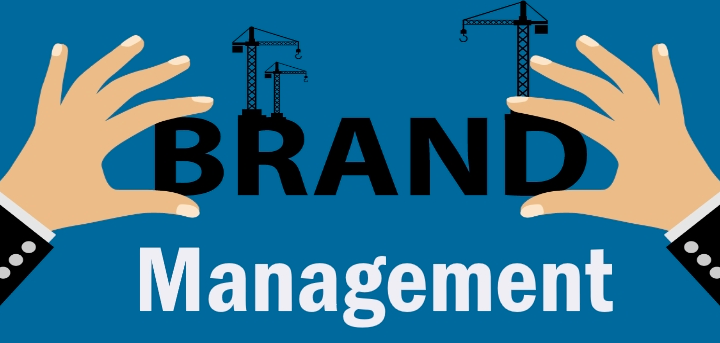The power of branding management in interior design: why it matters more than ever

In the ever-evolving world of interior design, visual excellence alone is no longer enough to stand out. With countless design firms, freelancers, and boutique studios flooding the digital space, the real differentiator lies in how a business presents and positions itself to the world. This is where branding management steps in as a vital strategic asset.
For interior designers, branding isn’t just about a stylish logo or a trendy Instagram feed. It’s about defining a consistent narrative that aligns with your design philosophy, speaks directly to your ideal clients, and fosters long-term trust and recognition. Effective branding management ensures that every element—online or offline—supports that cohesive vision.
branding management: a cornerstone of professional success
The core of branding management lies in consistency and clarity. As an interior designer, your brand tells people who you are, what you value, and why they should choose you over someone else. If done right, it becomes your voice, your visual identity, and your strategic roadmap all in one.
Whether you’re running a solo interior design consultancy or managing a large firm, investing in branding creates opportunities to:
- Position yourself as an expert
- Build emotional connections with clients
- Establish credibility in a competitive market
- Attract high-value projects and partnerships
- Create a scalable identity for future growth
It’s more than marketing—it’s foundational.
building the brand beyond the portfolio
Many interior designers assume that their portfolio speaks for itself.. Great branding management helps shape the story behind the work.
Your website, social media profiles, proposal templates, business cards, email signatures, and even how you answer calls are all touchpoints of your brand. Clients want to know the designer behind the project. Your values, your unique approach, your background, and your customer service philosophy all contribute to your brand identity.
Without strong branding management, these touchpoints can feel disconnected or unclear. When done well, they work in harmony to reinforce your message.
defining your brand identity in interior design
A successful brand starts with clarity. Before diving into visual elements, branding management requires you to ask the following questions:
- What is your design style or niche? (e.g., Scandinavian minimalism, sustainable interiors, luxury homes)
- Who is your target client? (e.g., young urban professionals, high-end homeowners, corporate spaces)
- What values do you stand for? (e.g., eco-conscious design, cultural relevance, affordability, innovation)
Once these foundational elements are defined, the visual and communicative aspects—logos, colors, typography, brand voice—can be built to reflect them.
For instance, a designer focused on eco-friendly homes may use a muted earthy palette and soft, organic fonts. Their brand voice might emphasize mindfulness and sustainability. In contrast, a luxury design firm may use bold, rich colors with sleek fonts, and a more assertive, exclusive tone.
See also: The Power of General Knowledge Questions
visual identity and how it supports branding
Your visual brand is your first impression—and in the world of design, it needs to be impeccable. Effective branding management ensures that your logo, color scheme, imagery, and design elements are not just attractive but purposeful and aligned with your messaging.
Here’s what a visual brand package typically includes:
- Logo and icon variations
- Color palette (primary and secondary)
- Typography (for headings, body text, etc.)
- Graphic elements or patterns
- Photography style guide
- Brand usage guidelines
Having a consistent visual identity across all platforms builds trust. Clients associate reliability with consistency, and interior designers especially cannot afford to appear scattered or unpolished.
digital presence and branding synergy
Today, your digital presence is likely the first point of contact between you and your audience. Whether it’s your website, Instagram page, LinkedIn profile, or Pinterest board, everything should feel part of the same ecosystem. A cohesive online brand boosts professionalism, credibility, and connection.
An effective branding management strategy ensures:
- Your social media visuals match your website’s aesthetic
- Your bio, about page, and content all reflect your brand voice
- Branded templates are used for social posts and presentations
- Blog content, case studies, and newsletters maintain tone consistency
- SEO strategies are aligned with your brand’s core topics and strengths
All of these efforts contribute to creating a unified digital identity that strengthens your positioning in the interior design world.
internal branding: aligning your team and operations
For interior design firms with a team, branding management isn’t just external—it’s internal too. Your staff, collaborators, and partners must understand and embody your brand values.
Here’s how branding internally benefits your business:
- Improves client experience through aligned communication
- Enhances team morale and company culture
- Sets guidelines for onboarding new hires or freelancers
- Establishes SOPs (standard operating procedures) that reflect brand values
When your internal team lives your brand, clients notice the difference. Everything from email replies to on-site consultations reflects the same energy and professionalism.
final thoughts: branding is your design partner
Branding does the same—but for your business. When done right, it becomes a magnet for your dream clients and a mirror of your values.
Effective branding management brings everything together—your visual identity, your messaging, your values, and your customer experience. In a highly visual and competitive industry like interior design, your brand can be your most powerful asset.
Whether you’re just starting out or looking to elevate an existing design studio, now is the time to invest in thoughtful, strategic branding. Because in a world full of noise, the designers with a clear, consistent, and confident voice are the ones who stand out and succeed.





